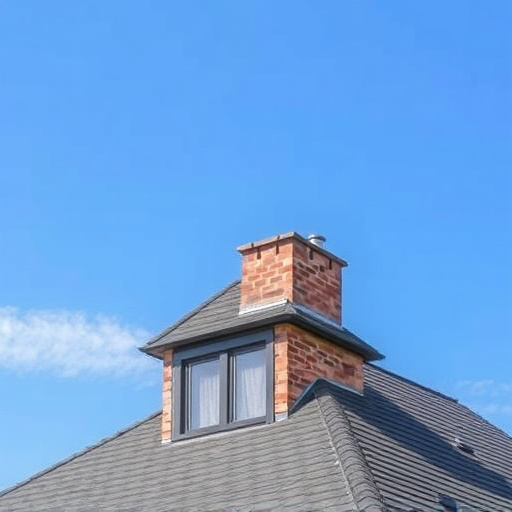Homeowners are increasingly adopting energy-efficient roofing options to reduce utility bills and environmental impact. Materials like solar reflective shingles, recycled metals, bamboo, and hemp offer durability and sustainability. Advanced technologies like reflective coatings and insulation minimize heat transfer, lowering cooling costs. Local regulations promote cool roofs and green systems, reducing carbon footprints. The future sees plant-based membranes and passive solar design as mainstream, ensuring a greener roofing landscape.
“Discover the future of home construction with sustainable roofing materials – a crucial step towards a greener planet. This comprehensive guide explores eco-friendly alternatives that not only reduce environmental impact but also offer significant energy savings. From traditional yet durable options like metal and plant-based materials to innovative systems like green roofs and solar panels, we uncover the benefits of each. Learn how these energy-efficient roofing choices enhance longevity, minimize maintenance, and contribute to a more sustainable future.”
- Understanding Sustainable Roofing Materials
- Benefits of Energy-Efficient Roofs
- Common Eco-Friendly Roofing Options
- Longevity and Low Maintenance Choices
- Solar Panels: A Revolutionary Approach
- Metal Roofing's Environmental Advantages
- Plant-Based Materials: Nature's Solution
- Green Roof Systems: Living Coverings
- Local Regulations for Sustainable Roofs
- Future Trends in Eco-Roofing
Understanding Sustainable Roofing Materials

Sustainable roofing materials are those designed to minimize their environmental impact while offering long-term functionality and comfort for homes. Beyond traditional options, today’s market offers a range of energy-efficient roofing choices that not only enhance a home’s aesthetics but also contribute to significant energy savings through roof design. Incorporating features like solar reflective coatings for roofs can significantly reduce the amount of heat absorbed by the building, thereby lowering cooling costs and reducing the overall carbon footprint.
By opting for these eco-friendly materials, homeowners can play their part in preserving the environment while reaping benefits such as lower utility bills. The selection process involves considering factors like durability, local climate compatibility, and recyclability, ensuring that the chosen roofing solution not only reduces energy consumption but also lasts for years, contributing to a more sustainable future.
Benefits of Energy-Efficient Roofs
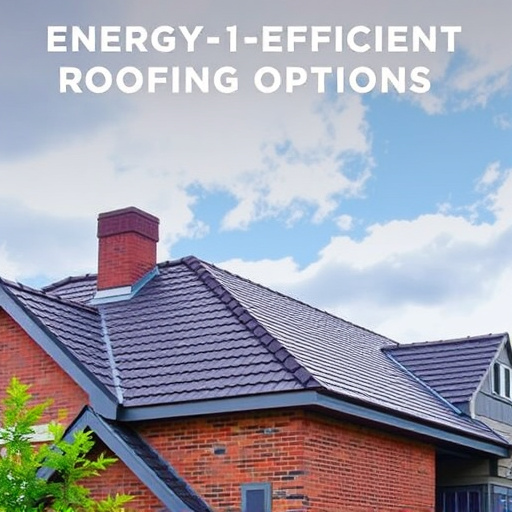
Energy-efficient roofs are a smart choice for homeowners looking to reduce their environmental impact and lower utility bills. These innovative roofing options go beyond traditional materials by incorporating advanced technologies designed to enhance energy conservation. One effective strategy is the use of reflective coatings, which can significantly reduce heat absorption and minimize the need for air conditioning. By reflecting sunlight away from the home’s interior, these coatings contribute to a cooler living space during hot seasons, thereby lowering energy consumption.
Moreover, energy-efficient roofing materials offer benefits that extend beyond climate control. Many modern options are designed with improved indoor air quality in mind. They can help maintain a healthier living environment by blocking harmful UV rays and reducing the buildup of heat, which can cause indoor pollutants to circulate. Additionally, some energy-efficient roofs are made from sustainable sources, further contributing to reduced carbon footprints. Ultimately, adopting these roofing solutions can lead to substantial savings on energy costs, making them a practical and eco-conscious choice for modern homes.
Common Eco-Friendly Roofing Options
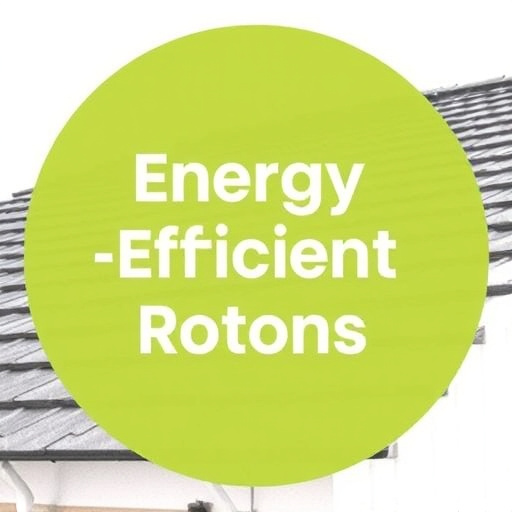
In today’s eco-conscious world, homeowners are increasingly turning to sustainable and energy-efficient roofing options for their homes. These choices not only contribute to a greener environment but also offer long-term cost savings on energy bills through roofing. Some of the most common eco-friendly roofing materials include recycled metal, which is durable and can be reused, significantly reducing waste. Another popular choice is compostable or biodegradable shingles made from natural fibers like bamboo, hemp, or organic felt, providing an excellent alternative to traditional asphalt shingles.
Solar reflective roofing options are also gaining traction due to their ability to reflect sunlight, thereby decreasing the amount of heat absorbed by the roof and lowering cooling costs. These materials are particularly beneficial in regions with hot climates, as they help maintain a comfortable indoor temperature and reduce the strain on air conditioning systems. By choosing energy-efficient roofing materials, homeowners can contribute to environmental sustainability while enjoying significant savings over time.
Longevity and Low Maintenance Choices
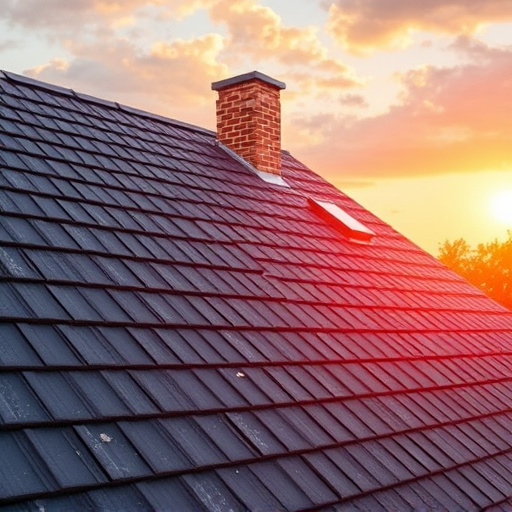
When considering sustainable roofing materials, homeowners can opt for long-lasting and low-maintenance choices that also offer significant energy savings. Energy-efficient roofing options, such as high-performance insulation for roofs or thermal insulation for flat roofs, are designed to withstand harsh weather conditions while reducing heat transfer, thereby lowering cooling and heating costs. These eco-friendly roofing alternatives not only minimize waste but also contribute to a home’s overall environmental sustainability.
Choosing materials that require minimal upkeep can save time and money in the long run. Many sustainable options, like metal or asphalt shingles with enhanced durability, are resistant to fading, cracking, and rusting, ensuring they maintain their aesthetic appeal and structural integrity for years. This longevity translates into fewer repairs and replacements, making them a practical choice for those seeking both environmental and financial benefits.
Solar Panels: A Revolutionary Approach
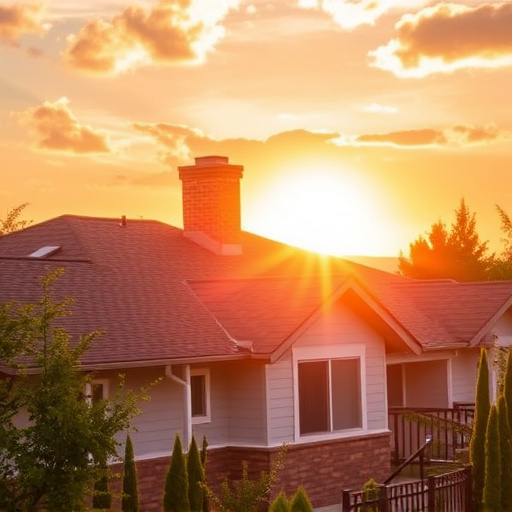
Solar panels represent a revolutionary approach to energy-efficient roofing options, offering homeowners a sustainable and cost-effective solution for their power needs. By harnessing the sun’s abundant energy, these panels not only reduce electricity bills but also significantly lower a home’s carbon footprint. This eco-friendly roofing option is particularly appealing in light of growing concerns about climate change, as it contributes to a greener environment through passive solar design in roofing.
In addition to their environmental benefits, modern solar panels are incredibly versatile and can be integrated into various roofing styles. They come in different types, from sleek and subtle to more visible options, allowing homeowners to choose a style that aligns with their architectural preferences while still reaping the rewards of sustainable living. This duality—both aesthetically pleasing and ecologically sound—makes solar panels an attractive choice for those seeking environmentally friendly re-roofing solutions.
Metal Roofing's Environmental Advantages
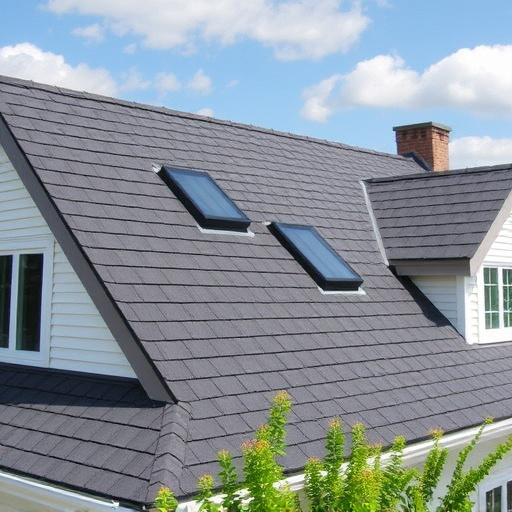
Metal roofing has emerged as a popular and sustainable choice for homeowners looking to reduce their environmental impact. One of its key advantages is its longevity; metal roofs can last for decades, significantly decreasing the need for frequent replacements compared to traditional materials. This extended lifespan translates into less waste ending up in landfills, a major benefit in today’s eco-conscious world.
Additionally, metal roofing offers excellent energy efficiency. The reflective surfaces and high-performance insulation incorporated into modern metal panels can help regulate indoor temperatures, reducing the reliance on air conditioning or heating systems. This not only minimizes energy consumption but also contributes to cost savings for homeowners. With advancements in material science, metal roofing has become an attractive option, combining durability, sustainability, and innovative features like solar reflective coatings that further enhance its environmental benefits.
Plant-Based Materials: Nature's Solution
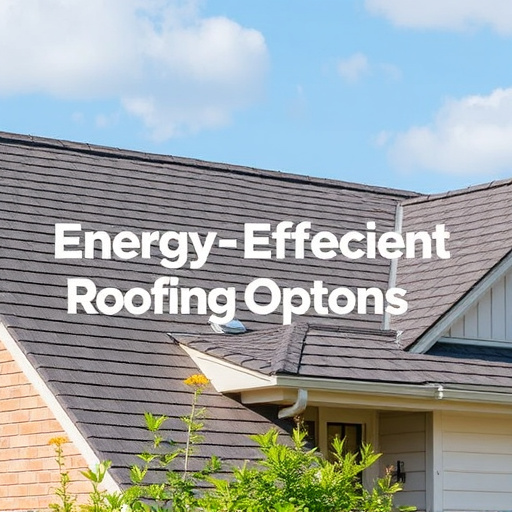
Plant-based materials are emerging as a powerful solution for those seeking energy-efficient roofing options that also align with environmental sustainability. These natural alternatives offer a compelling choice for homeowners looking to reduce their carbon footprint and contribute to a greener planet. By harnessing the power of plants, such materials provide an environmentally conscious roofing choice that not only minimizes waste but also offers excellent insulation properties, helping regulate indoor temperatures and reducing energy consumption.
From bio-based composites to recycled fibers, these innovative products are transforming the roofing industry. They represent a significant step towards eco-friendly roof alternatives without compromising on durability or aesthetic appeal. As consumers become increasingly mindful of their environmental impact, the adoption of plant-based materials in roofing is poised to grow, paving the way for a more sustainable future where environmentally friendly re-roofing becomes the norm rather than the exception.
Green Roof Systems: Living Coverings
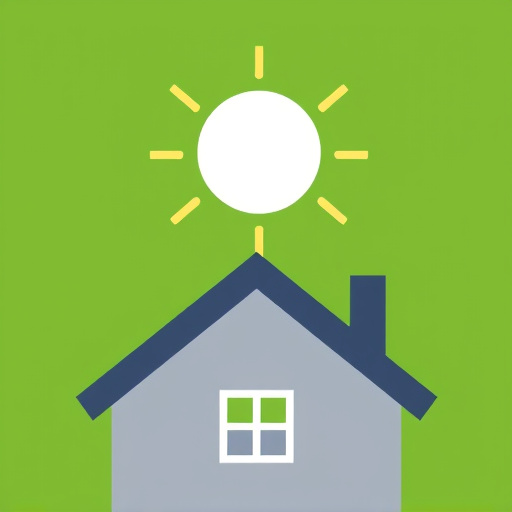
Green Roof Systems offer an innovative and sustainable approach to roofing, transforming traditional homes into vibrant ecosystems. These living coverings incorporate various plants, vegetables, or even grasses, providing multiple environmental benefits. Beyond aesthetics, green roofs are highly efficient in managing stormwater runoff, which is crucial for urban areas with low-slope energy-saving roofs. The plant life absorbs rainwater, reducing the strain on drainage systems and preventing flooding. This natural process also helps to cool down buildings in warm climates, making them more comfortable and less reliant on artificial cooling systems.
Additionally, these roofing solutions can contribute to reduced carbon footprints due to their ability to absorb carbon dioxide during photosynthesis. Solar reflective coatings for roofs, a key component in many green roof designs, further enhance energy efficiency by reflecting sunlight, thereby decreasing the building’s overall temperature. This dual action of insulation and solar reflection makes green roofs an attractive option for homeowners seeking both environmental sustainability and cost savings on their energy bills.
Local Regulations for Sustainable Roofs
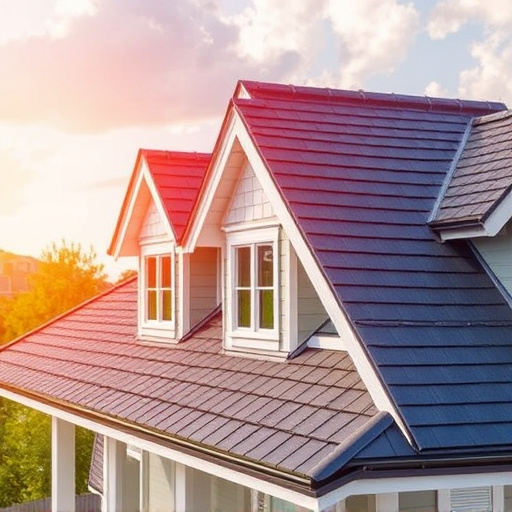
Many regions are now implementing local regulations to promote sustainable roofing practices, reflecting a global shift towards more eco-friendly building methods. These guidelines often encourage the use of energy-efficient roofing options, such as reflective or cool roofs, which can significantly reduce a home’s carbon footprint. Ventilated roofing systems benefits are another area of focus; these systems improve energy efficiency and building durability by providing enhanced ventilation, which is especially crucial in warmer climates.
Additionally, passive solar design in roofing is gaining traction as a way to harness the sun’s power for heating and lighting. Roofing systems with built-in solar panels or photovoltaic (PV) tiles are becoming more common, allowing homeowners to generate clean energy while reducing their reliance on traditional utilities. Local authorities often provide incentives and grants to encourage the adoption of these sustainable roofing materials, making them a viable option for environmentally conscious homeowners.
Future Trends in Eco-Roofing
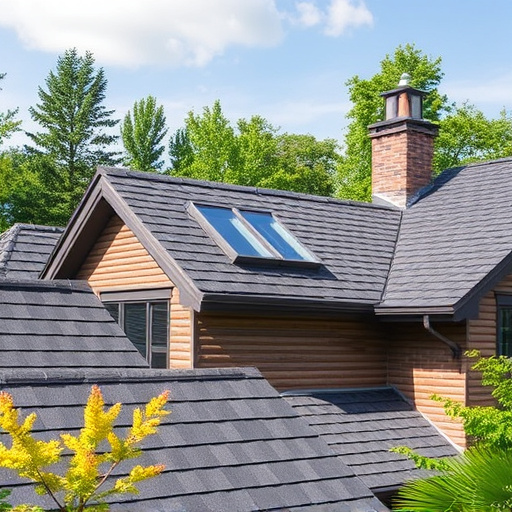
As we move forward into a greener future, the demand for sustainable and eco-friendly roofing options is on the rise. Future trends in eco-roofing are poised to revolutionize both residential and commercial energy-efficient roofing solutions. Architects and builders are increasingly integrating green building materials for roofs that not only reduce environmental impact but also offer long-term cost savings. One such trend is the incorporation of passive solar design in roofing, which harnesses natural sunlight to heat and cool buildings, thereby decreasing reliance on conventional heating and cooling systems.
Innovations in sustainable roofing materials continue to emerge, pushing the boundaries of what’s possible in eco-friendly construction. From plant-based membranes to recycled metal tiles, these advanced materials not only contribute to a healthier planet but also enhance building aesthetics. As awareness about climate change grows, consumers are becoming more discerning about their choices, and commercial energy-efficient roofing solutions that prioritize sustainability will become the new norm.
In conclusion, embracing sustainable roofing materials is a proactive step towards a greener future. By opting for energy-efficient roofs, homeowners contribute to reduced environmental impact while enjoying long-lasting, low-maintenance solutions. From traditional plant-based options to innovative solar panels and metal alternatives, the array of eco-friendly choices allows for personalized and stylish sustainability. Understanding local regulations and staying informed about emerging trends further empowers individuals to make conscious decisions, ensuring their homes become part of a sustainable and thriving community.
